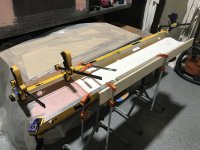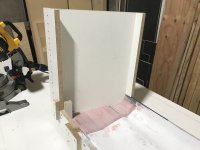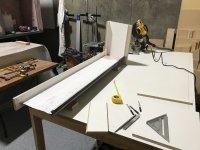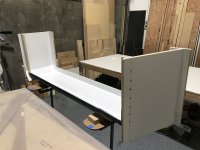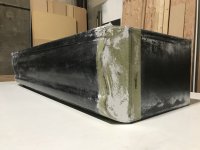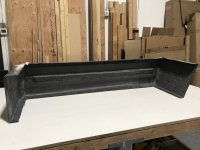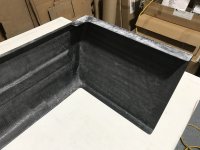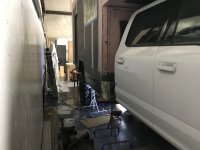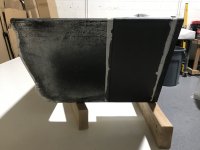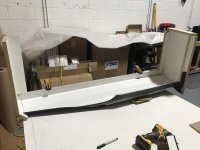Vance Vanz
Well-known member
Layout & Templating - Carbon Fiber Fairings/Skirts for Camper - Rear
Ohhhhhhh Man!
This may not look like much, but it took days to dial in the template for the rear fairings/skirts. I decided to start with the passenger side rear first, that fits around the step box. Step box wrap around, entry step location/mounting, mud flap mount/design/protection of steps, exhaust pipe routing/termination, departure angle, aesthetic tie in with the rear bumper, ........... etc. all had to be factored.
Once all of this was finalized on the passenger side, I then had to consider/account for everything on the drivers side rear of the camper that may affect the shape/design of the fairing, since the fairings will be an exact mirror of each other. Sounds simple, but the drivers side has the grey water tank, two plumbing drain lines going through the camper floor, two fuel filler lines going through the camper floor, ................. You get the idea.
This is when a lot of anxiety kicks in, because I don't want to forget something. One screw up could mean a scrapped composite fairing and weeks of extra work
 .
.
All of the top templates, to aid in getting the bottom one.

Building the mold for this one is going to be............... (I don't have a word of phrase for it yet . I'll get back to you)!
. I'll get back to you)!





Obviously the fairing for the drivers side will not have cut outs for the step box and stairs in it.


Ohhhhhhh Man!
This may not look like much, but it took days to dial in the template for the rear fairings/skirts. I decided to start with the passenger side rear first, that fits around the step box. Step box wrap around, entry step location/mounting, mud flap mount/design/protection of steps, exhaust pipe routing/termination, departure angle, aesthetic tie in with the rear bumper, ........... etc. all had to be factored.
Once all of this was finalized on the passenger side, I then had to consider/account for everything on the drivers side rear of the camper that may affect the shape/design of the fairing, since the fairings will be an exact mirror of each other. Sounds simple, but the drivers side has the grey water tank, two plumbing drain lines going through the camper floor, two fuel filler lines going through the camper floor, ................. You get the idea.
This is when a lot of anxiety kicks in, because I don't want to forget something. One screw up could mean a scrapped composite fairing and weeks of extra work
All of the top templates, to aid in getting the bottom one.

Building the mold for this one is going to be............... (I don't have a word of phrase for it yet





Obviously the fairing for the drivers side will not have cut outs for the step box and stairs in it.


Last edited:


